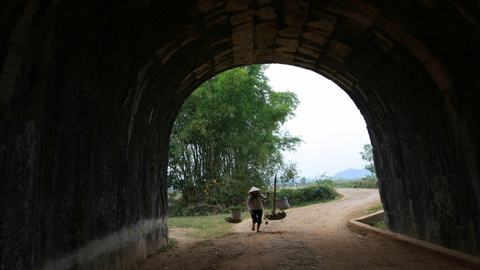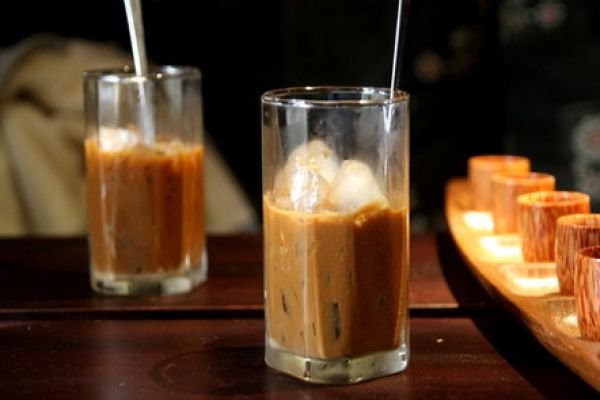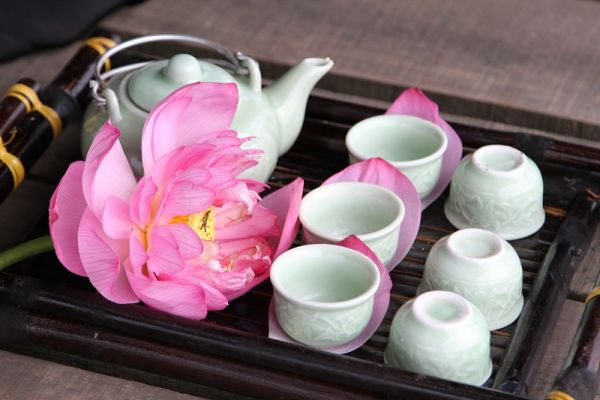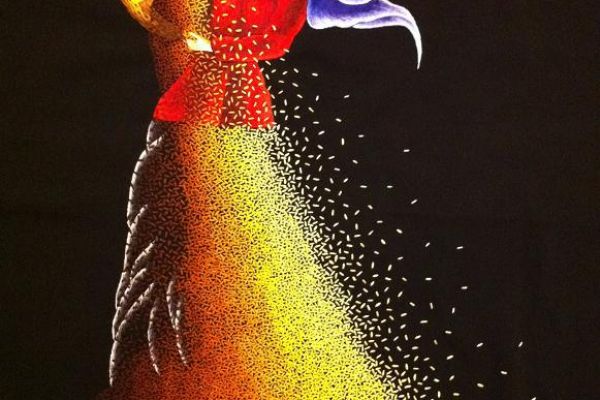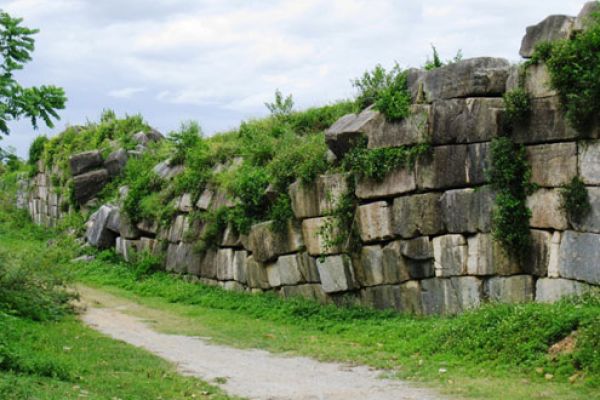
Ho Citadel of Vietnam was recognized by the UNESCO as a world cultural heritage site on June 27, 2011. This is not only the pride of Thanh Hoa people but also the pride of all Vietnamese people. The citadel is famous for historical values and the unique construction of rock.
Photos of Ho Citadel
The southern gate is the major gate to the citadel. This gate consists
of three doors. The middle door is 5.82m wide, 5.75m high. The two other doors are 5.45m wide, 5.35m high each.
The Southern Gate of Ho Citadel
The Southern Gate of Ho Citadel
The Southern Gate of Ho Citadel
The Northern gate is 20.2m long, 7.5m high, 13.7m thick forming a curve which is over 6.6m high, 5.80m wide. Top of the curve are paved with stone forming a surface which is 12.7m w:3c and 20m long with circle pillar holes of 0.45m in diameter and 0.45n deep down stone level.
 The Northern Gate of Ho Citadel.
The Northern Gate of Ho Citadel. The Northern Gate of Ho Citadel.
The Northern Gate of Ho Citadel.
The Northern Gate of Ho Citadel.
The Northern Gate of Ho Citadel.
The Eastern gate is 23.3m long, 13.4111 thick, 5.7m wide forming a curve of 6.6m high.
The eastern gate of Ho Citadel
The eastern gate of Ho Citadel
The eastern gate of Ho Citadel
The eastern gate of Ho Citadel
The Western gate is 19.3m long, 13.4m thick, 5.7m wide forming a curve of 6.1m high.
 The western gate of Ho Citadel
The western gate of Ho Citadel 
The western gate of Ho Citadel 
The whole wall and four major gates are built by schist, without using any
kind of mortar. Blocks of marbles are 1.5 meters long on average. Some of
them are up to 6 meters long, weighing around 24 tons.
 If the outside layer of the citadel wall is built by schist, the inside layer is built by soil and stone.
If the outside layer of the citadel wall is built by schist, the inside layer is built by soil and stone. 
 After over six centuries, some sections of the wall are broken.
After over six centuries, some sections of the wall are broken. 
 Two stone dragons without heads are the only remains inside the citadel.
Two stone dragons without heads are the only remains inside the citadel.
Researchers said that the pair of dragons is the biggest and most beautiful in Vietnam.  Since 2004, archaeologists have conducted many excavations in the citadel.
Since 2004, archaeologists have conducted many excavations in the citadel.
They have unearthed tens of thousands of antiques of the Ho Dynasty.
These are stone balls that were used with rollers to transport big rocks to build the citadel.  Terra-cotta bricks which were used to pave the surface of the wall.
Terra-cotta bricks which were used to pave the surface of the wall.  Tiles to roof palaces.
Tiles to roof palaces.  A phoenix head.
A phoenix head.  Terra-cotta items.
Terra-cotta items.  Stone-made and iron-made weapons.
Stone-made and iron-made weapons.  In 1402, the Ho Dynasty built the Nam Giao Esplanade in Don Son, around
In 1402, the Ho Dynasty built the Nam Giao Esplanade in Don Son, around
2.5 km southeast from the Ho citadel. Annually, the Ho Dynasty performed offering
rituals to the heaven and the earth to pray for peace and prosperity for the country.  The esplanade was built by rock and terra-cotta bricks and tiles.
The esplanade was built by rock and terra-cotta bricks and tiles.  Gieng Vua (Well of the King) is preserved well. The King used water from this
Gieng Vua (Well of the King) is preserved well. The King used water from this
well to wash of the dust before performing rituals at the Nam Giao Esplanade.








